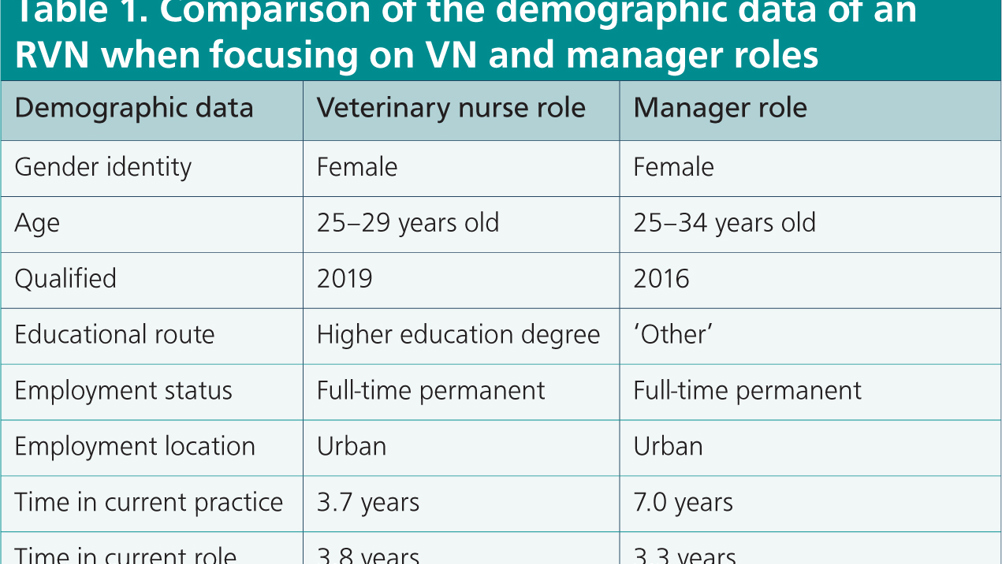References
Veterinary nurse skill utilisation in small animal practice

Abstract
Aim:
Confidence levels can be affected in individuals that do not clearly understand a job role; be it the employee, those that delegate to them or the owners of the patients that they treat. Determining how registered veterinary nurses (RVNs) are currently utilised in practice was one part of a study that looked at their overall preparedness to work within the veterinary environment.
Methods:
A vignette of the demographics of veterinary nurses was established and frequencies were determined for a variety of duties: 1) administration, 2) management and 3) patient care.
Results:
The results of this research indicate that there is more that can be done to promote the use of RVNs alongside the understanding of duties that should be carried out in this role. It must not be overlooked, however, that nurses are gaining opportunities to be involved in a variety of duties and therefore need to champion themselves to have these skills recognised.
Conclusion:
It is important RVNs fully understand their job role before they begin the much needed journey of embedding themselves into the practice.
Veterinary nursing is often cited as a misunderstood profession, not only by clients but also by those within the veterinary industry. This can lead to confusion of utilisation of the position and potentially undermining the confidence of those in the role (Davidson, 2017a; Belshaw et al, 2018; Bourne, 2018; Harvey and Cameron, 2019). Incorrect utilisation of an employee, alongside other factors such as salary, employer recognition and work/life balance, can lead to job dissatisfaction — a situation which can be avoided through open and honest discussions about expectations (Dale, 2013; Davidson, 2017b; Belshaw et al, 2018; Oberai and Anand, 2018; Robinson et al, 2019).
Registered veterinary nurses (RVNs) across the globe encounter the same problem of limited recognition and incorrect utilisation, which has been linked to shortened retention rates in the profession (dmv360, 2009; Bourne, 2018; Gyles, 2019; Robinson et al, 2019). Recognition and appropriate utilisation within the role is important to prevent demoralisation of RVNs who may not be carrying out the duties for which they were trained (dmv360, 2009; Harvey and Cameron, 2019; Robinson et al, 2019). RVNs and veterinary surgeons have campaigned for greater utilisation of nurses in practice and current literature suggests that there are still duties they are not involved with (Belshaw et al, 2018; Saunders, 2020; Yagi and Prendergast, 2020). A potential lack of preparation in these areas by educational providers could lead to RVN reticence, while research has established that lack of involvement in practice is caused by misunderstandings of the remit of RVNs (Davidson, 2017a, b; Saunders, 2020; Yagi and Prendergast, 2020; VN Futures, 2022).
Register now to continue reading
Thank you for visiting The Veterinary Nurse and reading some of our peer-reviewed content for veterinary professionals. To continue reading this article, please register today.

